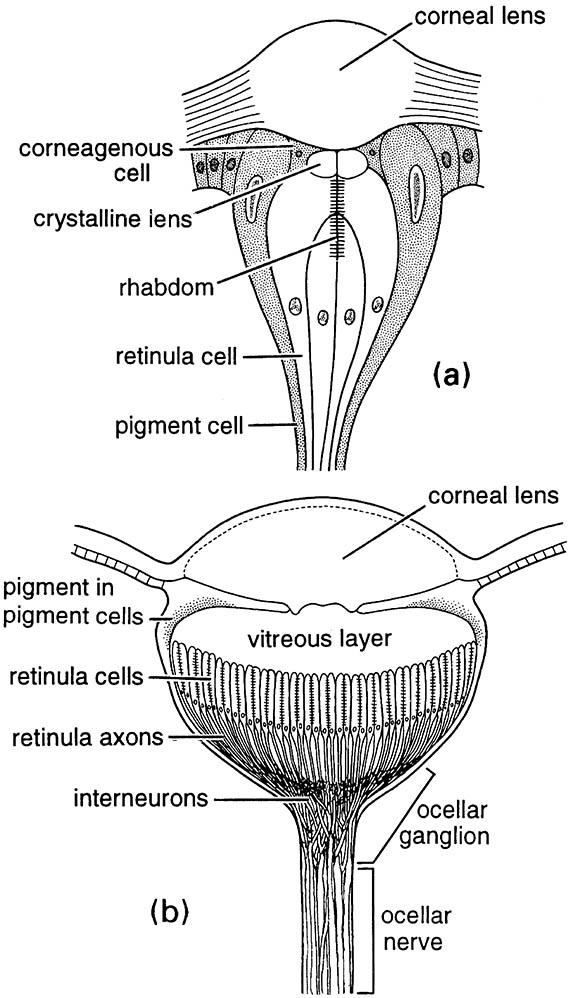4.4.3. Ocelli
Many adult insects, as well as some nymphs, have dorsal ocelli in addition to compound eyes. These ocelli are unrelated embryologically to the stemmata. Typically, three small ocelli lie in a triangle on top of the head. The cuticle covering an ocellus is transparent and may be curved as a lens. It overlies transparent epidermal cells, so that light passes through to an extended retina made up of many rhabdoms (Fig. 4.9b). Individual groups of retinula cells that contribute to one rhabdom or the complete retina are surrounded by pigment cells or by a reflective layer. The focal plane of the ocellar lens lies below the rhabdoms so that the retina receives a blurred image. The axons of the ocellar retinula cells converge onto only a few neurons that connect the ocelli to the brain. In the ocellus of the dragonfly Sympetrum, some 675 receptor cells converge onto one large neuron, two medium-sized neurons, and a few small ones in the ocellar nerve.
The ocelli thus integrate light over a large visual field, both optically and neurally. They are very sensitive to low light intensities and to subtle changes in light, but they are not designed for high-resolution vision. They appear to function as “horizon detectors” for control of roll and pitch movements in flight and to register cyclical changes in light intensity that correlate with diurnal behavioral rhythms.

(a) a simple stemma of a lepidopteran larva; (b) a light-adapted median ocellus of a locust. ((a) After Snodgrass 1935; (b) after Wilson 1978)

